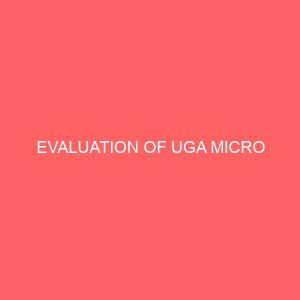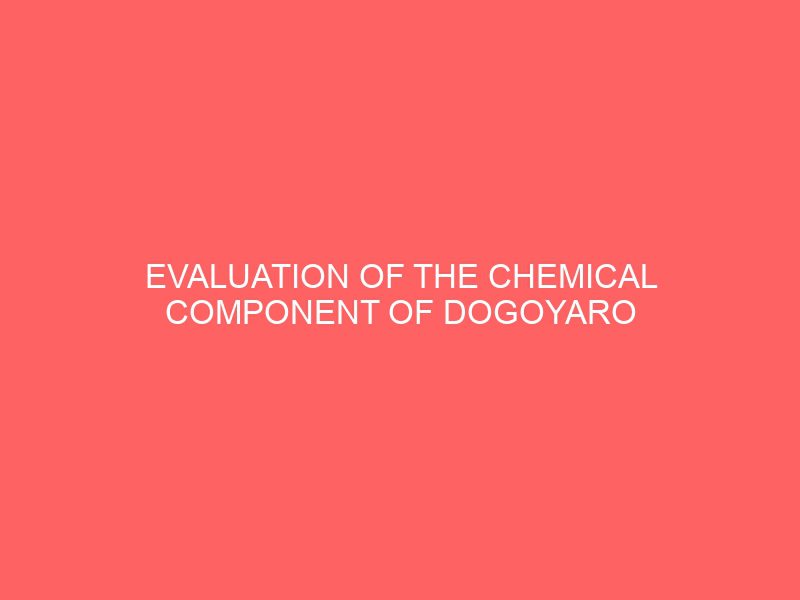Description
CHAPTER ONE
1.1 INTRODUCTION
This research is on Evaluation of the chemical component of dogoyaro liquid (azadirachta indica) for anti-malaria. Malaria infections are characterized by defective immune responses with poor efficacy against infection, and in some cases, with immunopathology. Severe malaria is a complex multisystem disorder. Complications such as cerebral malaria, anemia, acidosis, jaundice, respiratory distress, renal insufficiency, coagulation anomalies and hyperparasitemia can occur in severe malaria[2]. About 300-500 million clinical cases and 1.2–2.8 million deaths due to malaria occur each year[3,4]. The rising problem of resistance to the classical drugs (chloroquine and sulphadoxine pyrimethamine)[5–7] and the problem of recrudescence of malaria after treatment with artemisinin stress the need for new antimalarial agents[8].
The malaria drugs quinine and artemisinin are both plant derivatives and are obtained from Cinchona species[9,10] and Artemisia annua[11,12] respectively, suggesting that other effective malaria drugs might be plant-derived. Azadirachta indica plants from the Meliaceae family are extensively used as traditional remedies against malaria in the tropics[9,13,14]. Several studies demonstrated that A. indica leaf, seed and stem bark extracts possess in vitro inhibitory activity on Plasmodium falciparum asexual stages[15–17]. In vitro screening of purified limonoids from Neem revealed that gedunin and nimbolide are the most active molecules against P. falciparum.
MacKinnon et al. examined 60 extracts from 22 species of Meliaceae by characterizing their in vitro antiplasmodial activity against chloroquine-sensitive (D6) and chloroquine-resistant (W2) malaria clones (Dd2, Indochina)[15,19]. Twelve extracts were found to have activity against P. falciparum, especially extracts of Cedrela odorata wood and Azadirachta indica leaves, both containing the limonoid, gedunin[20]. Gedunin has been repeatedly re-isolated as an active antimalarial principle, most recently from Khaya grandifoliola[21]. The antimalarial properties of several plant extracts have been studied in mice[22]. Therefore, we sought to examine the anti-plasmodial activity of Azadirachta indica, commonly known as Neem, a plant used in Sudan, India and other countries as a folk medicine, in a human malaria investigation of malaria produced in Plasmodium berghei ANKA infected mice.
To examine the effects of an antimalarial treatment, we measured physiological and morphological responses. We also examined cerebral malaria. Neuronal ischemia and inflammation from malaria, depending on the acuteness and intensity of the symptoms, can lead to cellular necrosis or apoptosis[23]. Caspases play important roles in the commitment and execution phases of apoptosis[24]. Importantly, caspase-3 acts as a major downstream effector mediating neuronal apoptosis. We examined protection from caspase-dependent apoptosis as a mechanism of malaria treatment effectiveness.
1.2 AIM OF PROJECT
Many researches have been carried out on neem plant (Azadirachta indica) and results have shown that it has both medicinal and pharmacological properties against malaria. However, there are no documented information relating the mineral properties inherent in the leaf of the plant. Consequently, this work was aimed at determining some chemical component present in the water extract of neem leaf using the modern atomic absorption spectrophotometric analysis..
1.3 SCOPE OF THE STUDY
Extracts from neem tree (Azadirachta indica A. Juss) also called “dogonyaro” in Nigeria are most consistently recommended in ancient medical texts for gastrointestinal upsets, diarrhea and intestinal infections, skin ulcers and infections, and malaria (Schmutterer,1995). India encouraged scientific investigations of neem tree as part of his program to revitalize Indian tradition and also increase commercial interest on neem (Stix, 1992) and presently some authors believe that no other plant or tree in the world has been so extensively researched or used, in all possible capacities so far. In Africa extracts from Neem leaves have provided various medicinal preparations (Ekanem, 1971 and Udeinya, 1993).
1.4 SIGNIFICANCE OF THE STUDY
Development of modern non-toxic drugs from neem has earlier been suggested (Biswas et al, 2002) and IRAB represents such dream. This fractionated acetone/water neem leaf extract is the only drug reported to have activities against Malaria. Recent in-vivo studies have substantiated the earlier in-vitro reports of pharmacological properties.
1.5 OBJECTIVE OF THE STUDY
Main Objective
- Evaluation of the chemical component of dogoyaro liquid (azadirachta indica) for anti-malaria
Specific Objective
- To examine the chemical component of dogoyaro leaf which serve as drug to many illness especially Malaria







